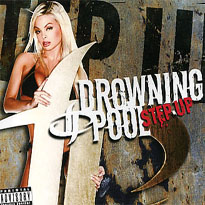리브조
Libjo리브조 알보르 | |
|---|---|
| 리브조 현 | |
 | |
 Libjo가 강조 표시된 Dinagat 제도의 지도 | |
필리핀 내 위치 | |
| 좌표: 10°11′45″N 125°31′58″E / 10.195967°N 125.532847°E좌표: 10°11′45″N 125°31′58″E / 10.195967°N 125.532847°E | |
| 나라 | 필리핀 |
| 지역 | 카라가 |
| 주 | 디나가트 제도 |
| 구 | 론 구 |
| 설립됨 | 1960년 2월 29일 |
| 바랑게이 | 16(바랑게이 참조) |
| 정부 | |
| • 유형 | 상무니앙바얀 |
| • 시장 | 람베르토 T. 라메라 주니어 |
| • 부시장 | 졸탄 아넬 S. 에데라 |
| • 대표 | 앨런 1 B. 에클레오 |
| • 유권자 | 유권자 1만2천130명(2019년) |
| 면적 | |
| • 합계 | 180.57km2(69.72제곱 mi) |
| 표고 | 56m(제곱 피트) |
| 최고 고도 | 438m(1,437ft) |
| 최저 고도 | 0m(0ft) |
| 인구 (1998년 인구조사) | |
| • 합계 | 18,051 |
| • 밀도 | 100/km2 (190/sq mi) |
| • 가구 | 4,057 |
| 이코노미 | |
| • 소득계층 | 제5기 시립 소득계층 |
| • 빈곤 발생 | 43.56% (2015)[4] |
| • 수익 | ₱110,966,673.05 (2020) |
| • 자산 | ₱297,625,777.61 (2020) |
| • 지출 | ₱75,059,988.57 (2020) |
| • 부채 | ₱38,130,514.55 (2020) |
| 서비스 제공업체 | |
| • 전기 | 디나가트 섬 전기 협동조합(DIELCO) |
| 시간대 | UTC+8(PST) |
| 우편번호 | 8414 |
| PSGC | |
| IDD : 지역번호 | +63 (0)86 |
| 네이티브 언어 | 수리가온 세부아노 타갈로그어 |
| 웹사이트 | www |
리브조 시, 공식적으로 리브조 시(스리가오논: Lungsod nan Libjo, Cebuano: Lungsod sa Libjo, Tagalog: 바얀 ng libjo; 와레이: 붕토 한 libjo)는 필리핀 디나가트 제도 지방의 5급 자치단체다. 2020년 인구조사에 따르면 인구는 1만8051명이다. [3]
이전에는 알보르로 알려져 있었다.
역사
이 마을은 2006년 12월 공화법 제9355호에 의해 수리가오 델 노르테에서 지방이 만들어졌을 때 디나가트 제도의 일부가 되었다. 그러나 2010년 2월 대법원은 지방토지 면적과 인구 등에 필요한 요건을 갖추지 못해 위헌 결정을 내렸다. 그 도시는 수리가오 델 노르테로 되돌아갔다.[5] 그러나 2012년 10월 24일, 대법원은 전년도의 판결을 뒤집고, RA 9355의 합헌성과 디나가트 제도의 지방으로서의 창설을 지지했다.[6]
바랑게이
Libjo는 정치적으로 16개의 Barangay로 세분된다. [7]
- 알보르 (포블라시온)
- 아렐라노 (마드리드)
- 바야니한
- 도냐 헬렌
- 가르시아
- 아귀날도 장군 (볼로드볼로드)
- 카니하안
- 라메라
- 매사세이
- 오스메냐
- 플라리델
- 케존
- 로지타
- 샌안토니오 (포블라시온)
- 산호세
- 산토니뇨
기후
| 리브조, 디나가트 제도의 기후 데이터 | |||||||||||||
|---|---|---|---|---|---|---|---|---|---|---|---|---|---|
| 월 | 얀 | 2월 | 3월 | 4월 | 5월 | 준 | 줄리 | 8월 | 9월 | 10월 | 11월 | 12월 | 연도 |
| 평균 높은 °C(°F) | 27 (81) | 28 (82) | 28 (82) | 30 (86) | 30 (86) | 30 (86) | 29 (84) | 30 (86) | 30 (86) | 29 (84) | 29 (84) | 28 (82) | 29 (84) |
| 평균 낮은 °C(°F) | 23 (73) | 23 (73) | 23 (73) | 23 (73) | 25 (77) | 25 (77) | 25 (77) | 25 (77) | 25 (77) | 25 (77) | 24 (75) | 24 (75) | 24 (75) |
| 평균 강수량 mm(인치) | 210 (8.3) | 161 (6.3) | 123 (4.8) | 85 (3.3) | 148 (5.8) | 186 (7.3) | 164 (6.5) | 157 (6.2) | 141 (5.6) | 190 (7.5) | 223 (8.8) | 200 (7.9) | 1,988 (78.3) |
| 평균 비 오는 날 | 21.0 | 16.8 | 18.5 | 18.2 | 24.9 | 27.7 | 28.4 | 27.0 | 26.1 | 27.6 | 24.6 | 22.0 | 282.8 |
| 출처: 마테오블루 | |||||||||||||
인구통계학
| 연도 | Pop. | ±% p.a. |
|---|---|---|
| 1970 | 6,959 | — |
| 1975 | 5,801 | −3.58% |
| 1980 | 10,290 | +12.14% |
| 1990 | 14,170 | +3.25% |
| 1995 | 14,928 | +0.98% |
| 2000 | 16,610 | +2.32% |
| 2007 | 18,116 | +1.20% |
| 2010 | 17,567 | −1.11% |
| 2015 | 17,760 | +0.21% |
| 2020 | 18,051 | +0.32% |
| 출처: 필리핀 통계청 | ||
이코노미
| 리보의 빈곤발생현황 | |
| 출처: 필리핀 통계청[13][14][15][16][17][18] | |
참고 항목
참조
- ^ 리브조 현 (DILG)
- ^ "2015 Census of Population, Report No. 3 – Population, Land Area, and Population Density" (PDF). Philippine Statistics Authority. Quezon City, Philippines. August 2016. ISSN 0117-1453. Archived (PDF) from the original on May 25, 2021. Retrieved July 16, 2021.
- ^ a b Census of Population (2020). "Caraga". Total Population by Province, City, Municipality and Barangay. PSA. Retrieved 8 July 2021.
- ^ https://psa.gov.ph/sites/default/files/City%20and%20Municipal-level%20Small%20Area%20Poverty%20Estimates_%202009%2C%202012%20and%202015_0.xlsx; 발행일: 2019년 7월 10일; 출판사: 필리핀 통계청.
- ^ Tetch Torres (2010-02-11). "Dinagat Islands province back to being a town". Philippine Daily Inquirer. Archived from the original on 12 February 2010. Retrieved 10 February 2010.
- ^ "IRA Shares for LGUs Jump by 37.5% in 2013". Office of the President of the Philippines. January 9, 2013. Archived from the original on September 3, 2014.
- ^ "Province: Dinagat Islands". PSGC Interactive. Quezon City, Philippines: Philippine Statistics Authority. Retrieved 12 November 2016.
- ^ "Libjo: Average Temperatures and Rainfall". Meteoblue. Retrieved 25 December 2019.
- ^ Census of Population (2015). "Caraga". Total Population by Province, City, Municipality and Barangay. PSA. Retrieved 20 June 2016.
- ^ Census of Population and Housing (2010). "Caraga". Total Population by Province, City, Municipality and Barangay. NSO. Retrieved 29 June 2016.
- ^ Censuses of Population (1903–2007). "Caraga". Table 1. Population Enumerated in Various Censuses by Province/Highly Urbanized City: 1903 to 2007. NSO.
- ^ "Province of Dinagat Islands". Municipality Population Data. Local Water Utilities Administration Research Division. Retrieved 17 December 2016.
- ^ "Poverty incidence (PI):". Philippine Statistics Authority. Retrieved 28 December 2020.
- ^ https://psa.gov.ph/sites/default/files/NSCB_LocalPovertyPhilippines_0.pdf; 발행일: 2005년 11월 29일; 출판사: 필리핀 통계청.
- ^ https://psa.gov.ph/sites/default/files/2003%20SAE%20of%20poverty%20%28Full%20Report%29_1.pdf; 발행일: 2009년 3월 23일; 출판사: 필리핀 통계청.
- ^ https://psa.gov.ph/sites/default/files/2006%20and%202009%20City%20and%20Municipal%20Level%20Poverty%20Estimates_0_1.pdf; 발행일: 2012년 8월 3일; 출판사: 필리핀 통계청.
- ^ https://psa.gov.ph/sites/default/files/2012%20Municipal%20and%20City%20Level%20Poverty%20Estima7tes%20Publication%20%281%29.pdf; 발행일: 2016년 5월 31일; 출판사: 필리핀 통계청.
- ^ https://psa.gov.ph/sites/default/files/City%20and%20Municipal-level%20Small%20Area%20Poverty%20Estimates_%202009%2C%202012%20and%202015_0.xlsx; 발행일: 2019년 7월 10일; 출판사: 필리핀 통계청.
외부 링크
| 위키미디어 커먼즈에는 리브조와 관련된 미디어가 있다. |






